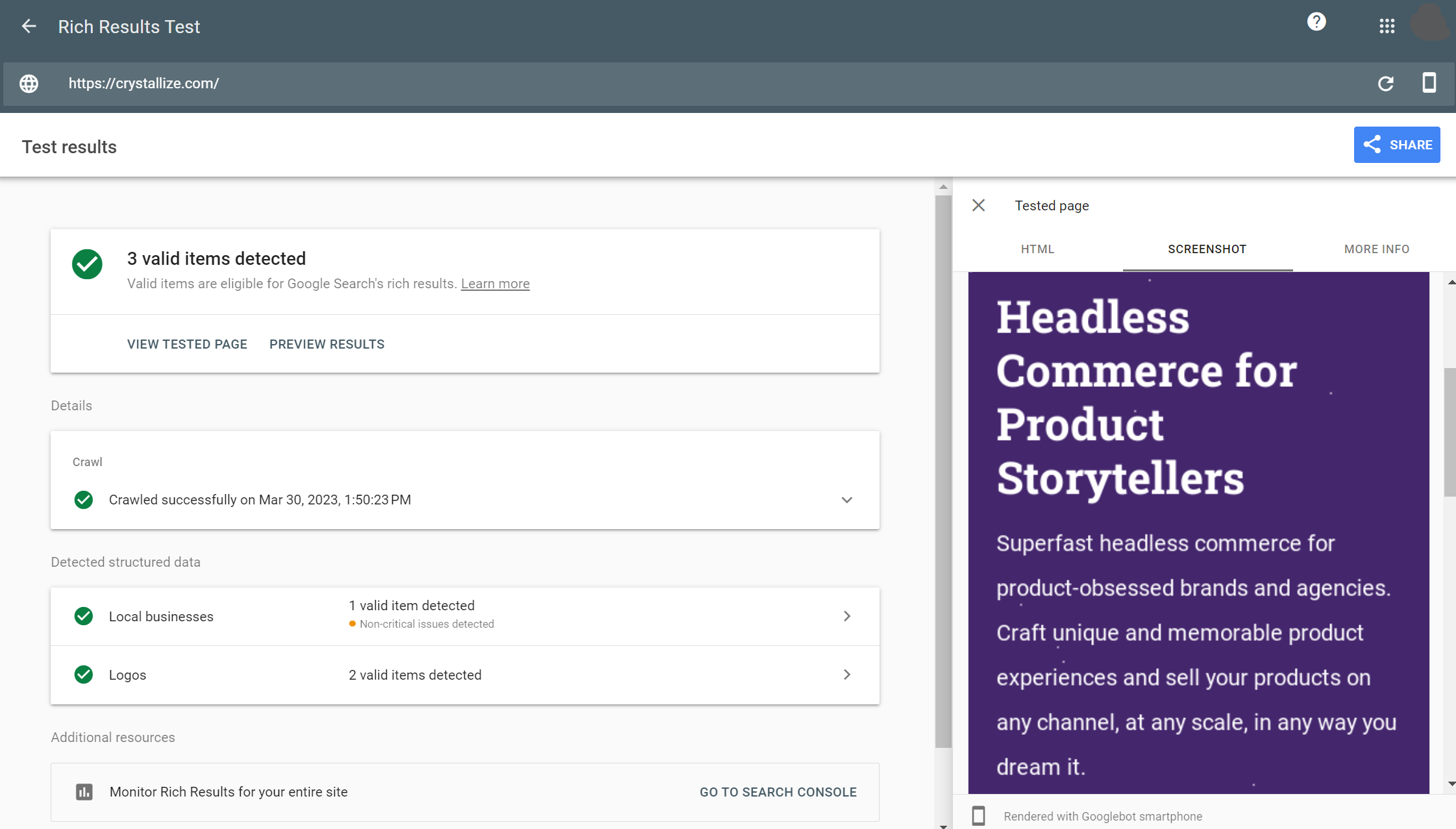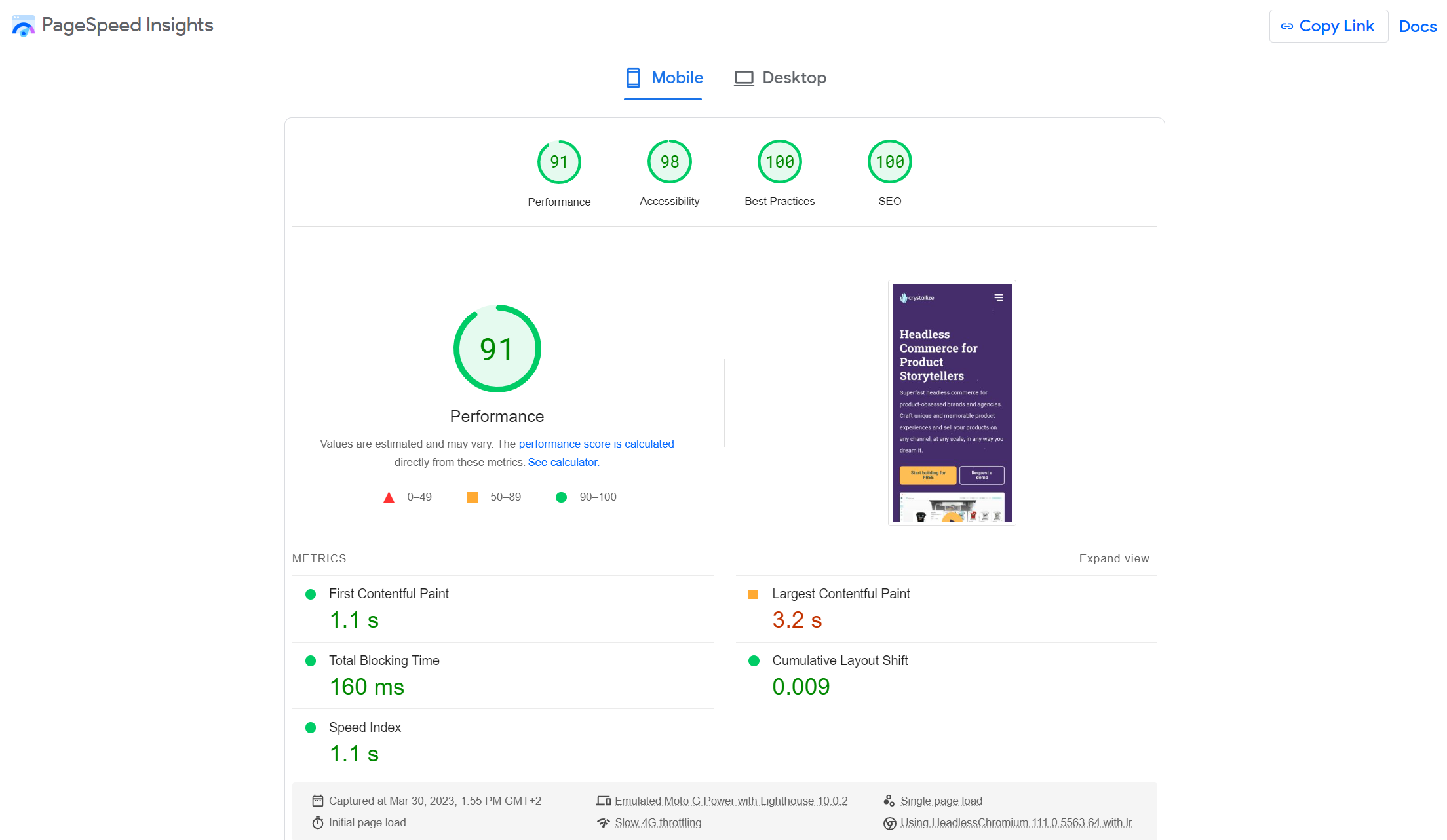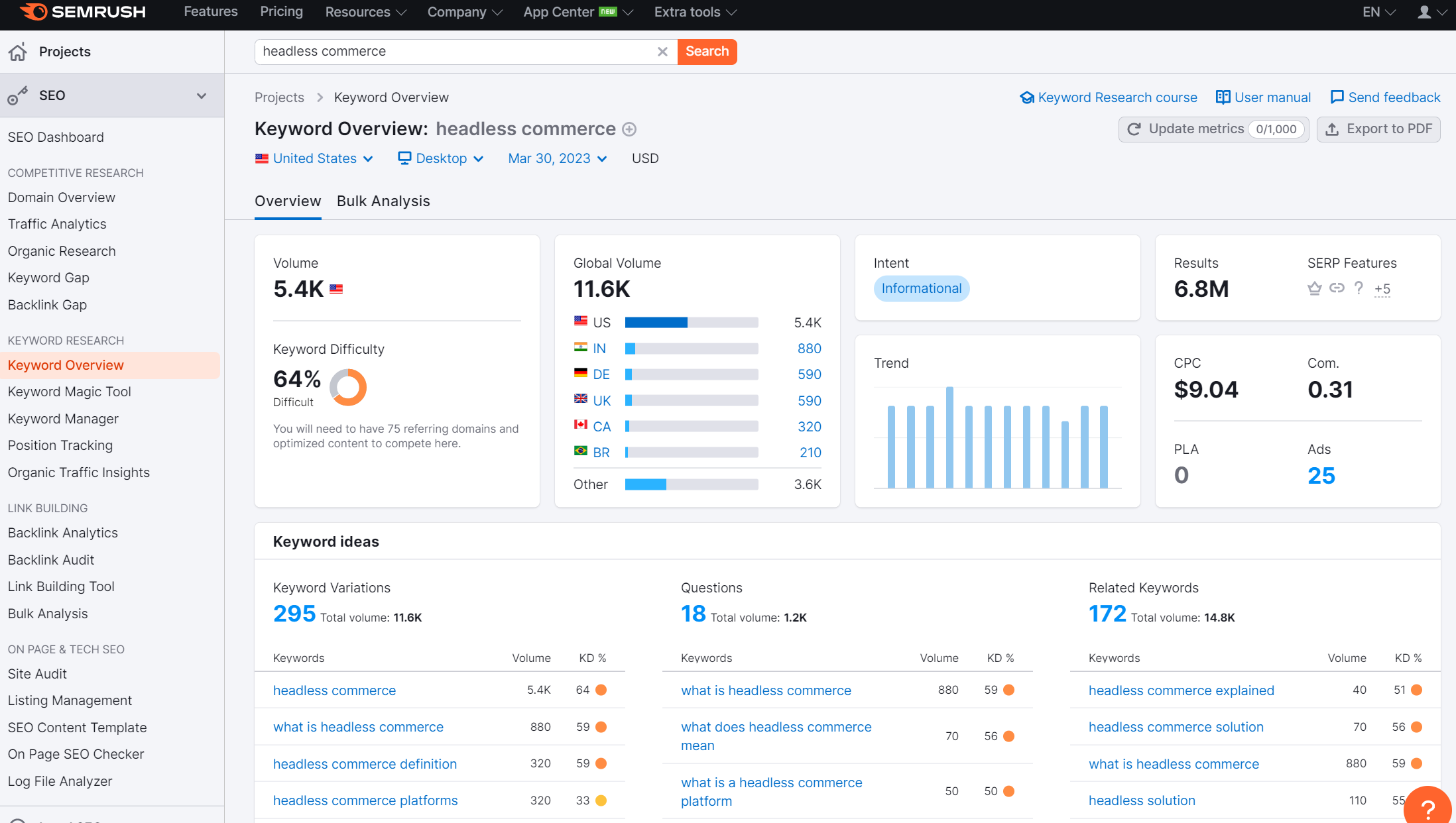
SEO Checklist 2023: The Basics
Search engine optimization (SEO) is one of the core skills of the trade of Internet craftsmanship. This SEO checklist includes the most important aspects that will keep your website ranking on the first page in Google. This SEO checklist is updated for 2023.
Staying on top of search engine changes and requirements for ranking might be hard, but SEO works; there is no doubt about that. It requires upfront investment and patience because it takes time for Google, anything between 6-12 months, to acknowledge your SEO efforts/changes. But search engines are the largest online traffic source, and the traffic (audience) you get is highly targeted, making your efforts worthwhile.
The following SEO checklist is broken into sections that cover the main focus areas of SEO with issues, items, and suggestions you might wanna check or do. By implementing these, you should be able to improve your search engine rankings and drive organic traffic dramatically in 2023.
Making sure issues, items, and suggestions in the checklist are taken care of is just one part of the story. Having a strategy in place is another. We’ve talked extensively about SEO on our website. Explore what we have:
👇General SEO checklist | 👉eCommerce SEO checklist | 📦Product Page SEO | 📍Local SEO | 📥Download ecommerce SEO guide
💡Deep dive into what you need to do before you start with SEO.
Set analytics: Track your website's performance and user behavior via GA4 or Google Analytics alternatives to optimize your SEO strategy over time.
Set Google Search Console and Big Webmasters Tools acc.: Monitor your site's search performance, fix crawl errors, and identify opportunities for improvement in Google and Bing.
Use SEO tools: Get accustomed to using SEO tools such as SEMRush, Ahref, Moz, SEOMonitor, ScreamingFrog, etc., to stay on top of your website health and keyword data.
Understand your target audience: Identify your ideal customer and their needs, preferences, and pain points. Tailor your content and SEO strategy accordingly.
Focus on user experience (UX): Enhance your website's usability, navigation, and design to keep users engaged and satisfied.
Prioritize page speed: Optimize your website's performance to improve overall user experience and influence search engine ranking, on top of lower ad spending and increasing conversions.
Create high-quality, engaging content: While speed matters, prioritize creating valuable, informative content that appeals to your target audience.
Create the right SEO KPIs: Most common ones are total search traffic growth, total organic keywords, total linking domains, etc. In case you run an eCommerce store, conversions from organic traffic through the lance of Customer Lifetime Value (CLV) is a must.
Perform a thorough site audit regularly: Review your website's overall performance, identifying areas for improvement and opportunities to optimize for search engines.
Now, let’s deep dive into 3 different focus areas, i.e., Tech SEO, On-page SEO, and Off-page SEO.
💡Deep dive technical SEO.
Optimize your site architecture: Create a logical site structure with clear, organized, and easily navigable categories and subcategories, no matter if you opt-out to headless, decupled, or monolith architecture.
Use search-friendly URLs: Ensure your URLs are short, descriptive, and keyword-oriented to improve visibility and user experience.
Validate HTML basics: Once you have your HTML basics in place, you need to validate them. You can use any of the already mentioned SEO tools or the W3C Markup Validation free tool.
Create an XML sitemap: Help search engines understand your site's structure and index your content more effectively.
Optimize your robots.txt file: Guide search engine crawlers by specifying which pages to index and which to ignore.
Implement canonical tags: Use canonical tags to help search engines identify your preferred version of a web page and prevent duplicate content issues.
Example:
<link rel="canonical" href="https://example.com/blog/seo-checklist">Fix broken links and 404 errors: Regularly check for and fix broken links, orphan pages, and error/missing pages to maintain a high-quality user experience.
Manage 301 redirects: 301 is a permanent redirect for permanent changes like URL change, page deletion, etc.
Optimize your site's crawl budget: Improve your website's crawl efficiency by reducing crawl errors and prioritizing important pages.
Social sharing tags: They are used to show rich results on social platforms like Facebook, Twitter, and LinkedIn. You can use metatags.io to verify that your social tags are correctly in place.
Implement hreflang tags for multilingual sites: Use hreflang tags to specify language and regional targeting, ensuring your content reaches the right audience.
Example:
<link rel="alternate" hreflang="lang_code" href="url_of_page" />Implement structured data markup: Use schema markup structure data to help search engines understand your content better and improve your search results appearance. You can use the Rich results test from Google to verify structured data.

Enable SSL encryption: Secure your website with HTTPS to protect user data and build trust with search engines and visitors.
Monitor Performance and Core Web Vitals: Keep track of your website's performance metrics as they directly impact your SEO efforts and user experience. Learn more about Core Web Vitals and their importance.
Embrace mobile-first indexing: Ensure your website is fully responsive and optimized for mobile devices. You can use the mobile-friendly test from Google to verify that your site is actually mobile-friendly.

💡Deep dive eCommerce keyword research.
Identify primary and secondary keywords: Target high-traffic, relevant keywords and their variations to maximize your content's reach.
Long-tail keywords: Might be easier for you to target longer, more specific keyword phrases to capture highly-targeted traffic with lower competition.
Opt for keywords with low to medium competition: Target these keywords to rank higher and drive more traffic in a shorter period.
Analyze your competitors' keywords: Identify your competitors' top-performing keywords to uncover gaps and opportunities in your own strategy.
Consider seasonal and trending keywords: Adapt your content strategy to address seasonal trends and emerging search patterns.
Prioritize search intent: Understand the user's intent behind each keyword and create content that addresses their needs and goals. It is in the search results.
Implement local SEO keyword research: For location-based businesses, target localized keywords to capture a specific geographic audience.
Balance keyword density: Use your target keywords naturally and avoid keyword stuffing to prevent search engine penalties.
Utilize keyword research tools: Leverage tools like Google Keyword Planner, Ahrefs, and SEMrush to discover keyword opportunities and search volumes.
Track keyword rankings: Regularly monitor your site's performance for target keywords and adjust your strategy accordingly.

💡Deep dive On-Page and Content SEO.
Optimize title tags: Create unique, descriptive, and keyword-rich title tags for each page to improve search visibility.
Craft compelling meta descriptions: Write engaging, informative meta descriptions that include target keywords and encourage users to click through.
Example:
<title>SEO checklist</title><meta name="title content="SEO checklist">
<meta name="description" content="Comprehensive 60-point SEO checklist that will help you grow and maintain your organic traffic.">Use header tags effectively: Structure your content with H1, H2, and H3 tags to improve readability and signal content hierarchy to search engines.
Example:
<h1>SEO checklist</h1>
<h2>Technical SEO</h1>Find and fix meta and H tags: Don’t forget to check for duplicated and missing tags across all your pages.
Optimize image file names and alt tags: Use descriptive file names and alt tags that include target keywords to enhance image search visibility.
Internal linking: Create a strong internal link structure to guide users and crawlers and distribute link equity throughout your site. We’ve mentioned this already in the tech SEO part.
External linking: Link to high-quality, authoritative external sources to provide additional value to your users and boost your site's credibility.
Find and fix keyword cannibalization: Check to see if you have multiple pages on your site that rank in Google for the same search term and take care of it.
Organize topic clusters: Build pages around important topics and keywords.
Update outdated content: Simple as it is written.
Optimize content for featured snippets: Structure your content and use markup to increase the chances of being featured in Google's position zero.
Optimize content length: Create comprehensive content that covers your topic thoroughly without sacrificing readability and user engagement. Look at search results for a given keyword and what is expected/appears in them.
Optimize your content for voice search: Adapt your content to cater to the increasing popularity of voice search, focusing on conversational and long-tail keywords.
Leverage schema markup for rich snippets: Use structured data to enhance your search result appearance with review stars, event details, and more. We’ve mentioned this already in the tech SEO part.
Focus on readability: Write in a clear, concise manner and use formatting techniques like bullet points and subheadings to improve user experience.
Yes. ChatGPT plugins and pre-made prompts are already appearing. Tasks like generating long-tail keywords, clustering a list of keywords based on their semantic relevance, suggesting titles for keywords, rephrasing existing content to avoid duplication, writing blog post outlines per keyword, even writing whole articles, generating summaries, generating Structured Data for page, generating the rules for your robots.txt, write outreach emails, make RegEx filter GSC Performance Report, etc. are possible but need human oversight because (for now) data set is limited to the year 2021.
The point is AI🤖 is a tool that can help you be better at SEO, not replace the SEO process completely, just as it will not replace what you do either.
💡 Deep dive Off-Page SEO.
Build high-quality backlinks: Focus on acquiring inbound links from reputable, authoritative websites to improve your site's credibility and search rankings. Don't do it ad hoc but develop a link-building strategy by utilizing tactics like guest posting, broken link building, and resource link building to earn those valuable backlinks.
Monitor competitors' backlink profiles: Keep an eye on your competitors' backlinks to identify potential link-building opportunities and stay ahead in the game.
Utilize online directories: Submit your website to relevant, high-quality directories to improve visibility and earn authoritative backlinks.
Publish press releases: Share newsworthy updates and events through press releases to gain media coverage and earn authoritative backlinks.
Create shareable, link-worthy content: Produce high-quality, informative, and engaging content that naturally attracts backlinks and social shares.
Monitor your backlink profile: Regularly assess your site's backlinks to identify harmful or low-quality links that may negatively impact your rankings.
Leverage social media: Share and promote your content on social platforms to increase visibility, engagement, and potential backlink opportunities.
Utilize influencer marketing: Partner with influencers in your niche to reach a wider audience and gain valuable backlinks and social shares.
Participate in industry forums and communities: Engage in discussions, share your expertise, and build relationships to boost your site's credibility and backlink potential.
Network with industry peers: Establish relationships with industry experts and thought leaders to build credibility and create collaboration opportunities.
Sponsor or attend industry events: Leverage event participation in building relationships, gaining visibility, and earning backlinks from event websites and media coverage.
Monitor and manage your online reputation: Regularly track and respond to reviews, mentions, and discussions about your brand to maintain a positive image and encourage organic backlinks.
Offer valuable resources: Develop industry-specific tools, guides, infographics, or research that can serve as linkable assets to attract backlinks.
Utilize video marketing: Create and share engaging video content on platforms like YouTube to generate traffic, engagement, and potential backlinks.
Leverage email marketing: Use email campaigns to share your content, build relationships, and encourage backlinks from your subscribers.
Search engine optimization best practices and suggestions are constantly evolving and changing, making it nearly impossible to include everything into one checklist.
We believe this SEO checklist is a good place to start. In case you want to go deeper, check one of the following links:
https://crystallize.com/blog/ecommerce-seo-checklist
https://moz.com/blog/new-website-seo-strategy
https://www.semrush.com/blog/seo-audit/
https://searchengineland.com/seo-metrics-track-391864
https://www.semrush.com/blog/seo-tips/
https://www.orbitmedia.com/blog/web-content-checklist-17-ways-to-publish-better-content/
To gauge the effectiveness of your SEO efforts, several Key Performance Indicators (KPIs) can be tracked and analyzed. Usual suspects are organic traffic, keyword rankings, and conversion rate:
- Organic Traffic, the number of visitors coming to your site through search engines. An increase in organic traffic typically indicates successful SEO efforts.
- Keyword Rankings, the position of your website on search engine results pages (SERPs) for specific keywords or phrases. A higher ranking means greater visibility and potentially more traffic.
- Conversion Rate, the percentage of organic traffic that completes a desired action on your site, like making a purchase, filling out a form, or subscribing to a newsletter.
But many businesses track and measure things like bounce rate, dwell time, pages per session, CTR, backlinks, domain authority (DA), etc. as well.
Informative as these are, they should not be analyzed alone but in the context of your business goals and KPIs.
For example, for eCommerce businesses, we’ve found that overall search engine traffic and profit from it through the lens of Customer Lifetime Value (CLV) is the best way to measure if your SEO efforts work and/or should be a part of your marketing strategy.
